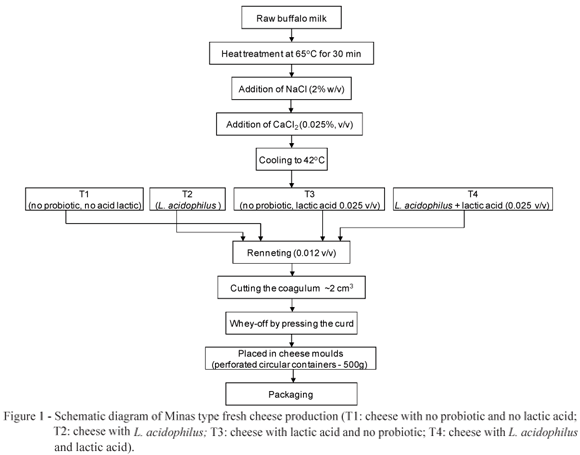Effective incorporation of a probiotic into foods requires the culture to remain viable all along processing and storage, without adverse alterations to sensory characteristics. The objective of this work was developing Minas-type fresh cheese with probiotic properties from buffalo milk. Four batches of Minas-type fresh cheese were prepared using buffalo milk: batch T1 in which neither culture nor lactic acid added; batch T3 in which only lactic acid added; batches T2 and T4 , both added of Lactobacillus acidophilus LAC 4, but T4 was also acidified. Resulting cheeses were evaluated for probiotic culture stability, texture profile, sensory acceptance, and changes in pH. The T4 probiotic cheese presented hardness, gumminess, and chewiness significantly lower than the other treatments. However, values for springiness and cohesiveness did not differ between all cheeses, and no sensory differences (p > 0.05) were found between treatments for texture, taste, and overall acceptance. The addition of probiotic to the acidified cheese (T4) yielded best aroma. The populations of L. acidophilus were greater than 10(6) CFU g-1 after 28 days of storage all products. Minas-type fresh cheese from buffalo milk is a suitable food for the delivery of L. acidophilus, since the culture remained viable during the shelf life of the products and did not negative affect analysed parameters.
Lactobacillus acidophilus; probiotic viability; sensory evaluation; texture





